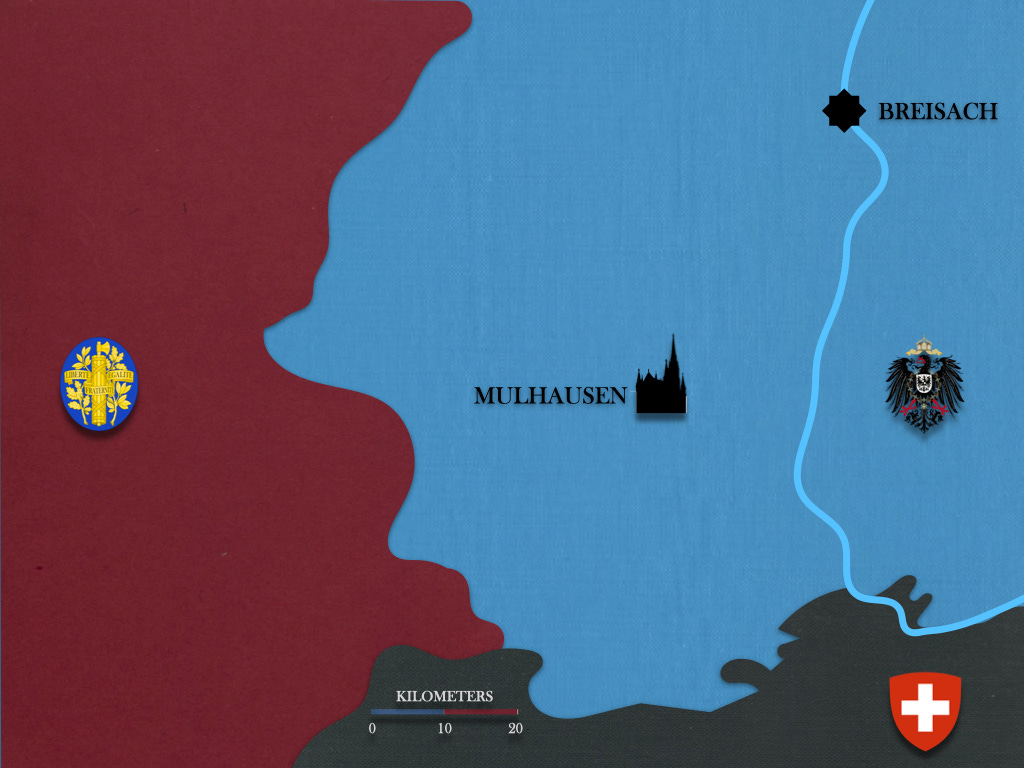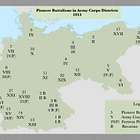Field Pioneer Battalions Assigned to Fortresses in the West
Part I: Battalions Employed as Complete Units
Welcome to the Tactical Notebook, where you will find more than five hundred tales of armies that are, armies that were, and armies that might have been. If you like what you see, please share the Tactical Notebook with your friends. If, however, you find our content to be irritating, supercilious, or just plain wrong, please share the Tactical Notebook with your enemies.
Of the three field pioneer battalions that began the First World War assigned fortresses on the Eastern Front, none saw any service as a complete unit. Rather, within days of the start of the war, each battalion lost its component companies to new organizational homes, most of which were ad hoc divisions assembled in haste from whatever units happened to be at hand in, or near, East Prussia at the time. In the West, however, three of the six pioneer field battalions that began the war in fortresses managed to take the field as intact organizations.
The second field battalion of the 14th Pionier Battalion [II./Pionier Bataillon 14], which had originally been assigned to the fortress of Breisach, spent the first few weeks of the war preparing the nearby countryside for the possible arrival of French forces. This work involved the demolition of church towers (which might be used by French observers), the clearing of fields of fire for the long-range guns of the German fortress, and, most of all, improvements to the local network of roads, railways, and bridges.
While performing this work, II./Pionier Bataillon 14 conducted training courses for its own three companies, as well as nearby pioneer companies of the Landwehr and Landsturm. It also dispatched individual platoons, some on foot and some mounted on bicycles, to blow up railway bridges and destroy railroad tracks.1
At the start of the third week of September of 1914, the second field battalion of the 16th Pionier Battalion [II./Pionier Bataillon 16] joined Army Detachment von Strantz [Armee Abteilung von Strantz], a newly-formed formation composed of two army corps and the 33rd Reserve Division. Soon thereafter, the battalion played a central role in the storming of Fort Camp des Romains.2
The second field battalion of the 21st Pioneer Battalion [II./Pionier Bataillon 21] spent the first five weeks of the war in much the same was as II./Pionier Bataillon 14. However, on 8 September 1914, it left the environs of the fortress of Metz in order to augment the (already considerable) force of pioneers serving with the Second Army. (At this time, the Second Army had been besieging the French fortress of Maubeuge for fourteen days. Thus, it is likely that II./Pionier Bataillon 21 had been sent forward in order to participate in that undertaking.)
On 14 September 1914, after a long train ride and a good deal of marching, II./Pionier Bataillon 21 reached the sector of the Second Army. However, as Maubeuge had fallen and the German forces in the field had just lost the battle of the Marne, the pioneers found themselves serving as riflemen in the sort of ad hoc formation that their sons would come to call a Kampfgruppe.3
For Further Reading:
Ernst Eggeling and Otto Doberg (Christopher Treichel, translator) The Baden Pioneers in the First World War (Lulu.com, 2023) pages 92 and 93
Bruce I. Gudmundsson “The Rise of the Stormtrooper” Iron Cross: German Military History 1914-1945 (Issue 5)
Das 1. Nassauische Pionier Bataillon Nr. 21 im Weltkriege 1914-1918 [The First Nassau Pioneer Battalion Number 21] (Mainz: J.D. Reuter, 1934) Volume I (1914-1915) pages 46 to 51







